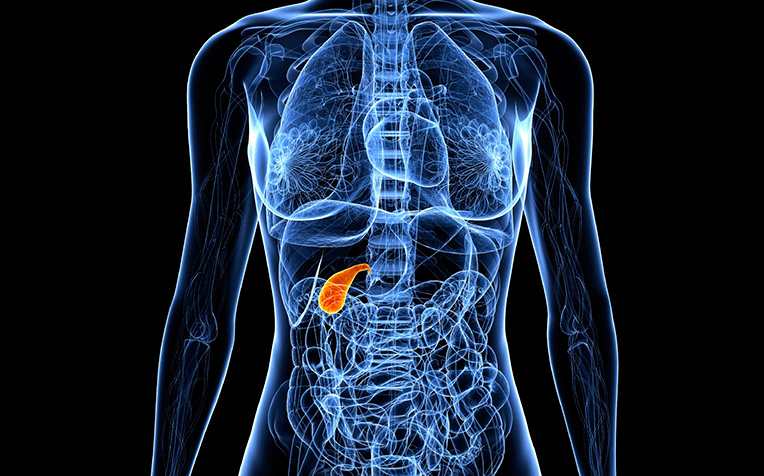
Gallbladder cancer and tumours
Gallbladder cancer is a relatively rare but often aggressive type of cancer that forms in the gallbladder, a small organ located beneath the liver that stores bile, a fluid produced by the liver to digest fats. Because early-stage gallbladder cancer seldom causes specific symptoms, it’s frequently diagnosed at a more advanced stage, which can complicate treatment and affect prognosis.
Types of Gallbladder Tumors
Gallbladder tumors can be benign (non-cancerous) or malignant (cancerous). The most common type of malignant gallbladder cancer is adenocarcinoma, which originates from the glandular cells lining the gallbladder’s interior. Less common types include sarcoma, neuroendocrine tumors, and lymphoma of the gallbladder.
Risk Factors
Several factors can increase the risk of developing gallbladder cancer, including:
- Gallstones: The most significant risk factor. The presence of gallstones is associated with the majority of gallbladder cancer cases.
- Chronic gallbladder inflammation: Long-term inflammation, often due to gallstones, can lead to dysplasia (pre-cancerous changes) and eventually cancer.
- Gallbladder polyps: Non-cancerous growths that may increase the risk if they are large (over 1 cm).
- Gender and age: Gallbladder cancer is more common in women and older individuals.
- Obesity: Being significantly overweight can increase the risk of gallstones and gallbladder cancer.
- Family history and genetics: A history of gallbladder cancer in the family might increase risk, as well as certain genetic conditions.
Symptoms
Gallbladder cancer does not typically cause symptoms in its early stages. When symptoms do occur, they may include:
- Abdominal pain, particularly in the upper right quadrant
- Nausea and vomiting
- Jaundice (yellowing of the skin and eyes)
- Fever
- Unintentional weight loss
- Bloating
- Itchiness
Diagnosis
Diagnosing gallbladder cancer involves a combination of medical history, physical examination, imaging tests, and biopsy:
- Imaging tests: Ultrasound is often the first test performed. CT scans, MRI, and endoscopic ultrasound (EUS) can provide more detailed images and help determine the cancer’s stage.
- Blood tests: To check liver function and look for markers associated with bile duct obstruction.
- Biopsy: Obtaining a tissue sample from the gallbladder for microscopic examination confirms the diagnosis.
Treatment
Treatment options depend on the stage of the cancer, the patient’s overall health, and other factors. They may include:
- Surgery: The primary treatment for early-stage gallbladder cancer. It may involve removing the gallbladder (cholecystectomy), portions of the liver and bile ducts, and nearby lymph nodes.
- Chemotherapy and radiation therapy: These treatments may be used to shrink tumors before surgery, kill remaining cancer cells post-surgery, or as palliative care to relieve symptoms in advanced cases.
- Targeted therapy and immunotherapy: Emerging treatments that target specific aspects of cancer cells or enhance the immune system’s ability to fight cancer.
Prognosis
The prognosis for gallbladder cancer greatly depends on the disease’s stage at diagnosis. Early detection leads to a more favorable prognosis, but unfortunately, many cases are diagnosed at a late stage when the cancer has spread, making treatment more challenging.
Prevention
While there’s no guaranteed way to prevent gallbladder cancer, reducing the risk of gallstones through maintaining a healthy weight, eating a balanced diet, and managing conditions like obesity and diabetes may help. Regular medical check-ups can also aid in the early detection of gallstones and other gallbladder issues.
To book online select the date and time that suits you best – alternatively, please contact us with any questions via the chat, call or email links provided.
Telephone: 020 7101 3377

